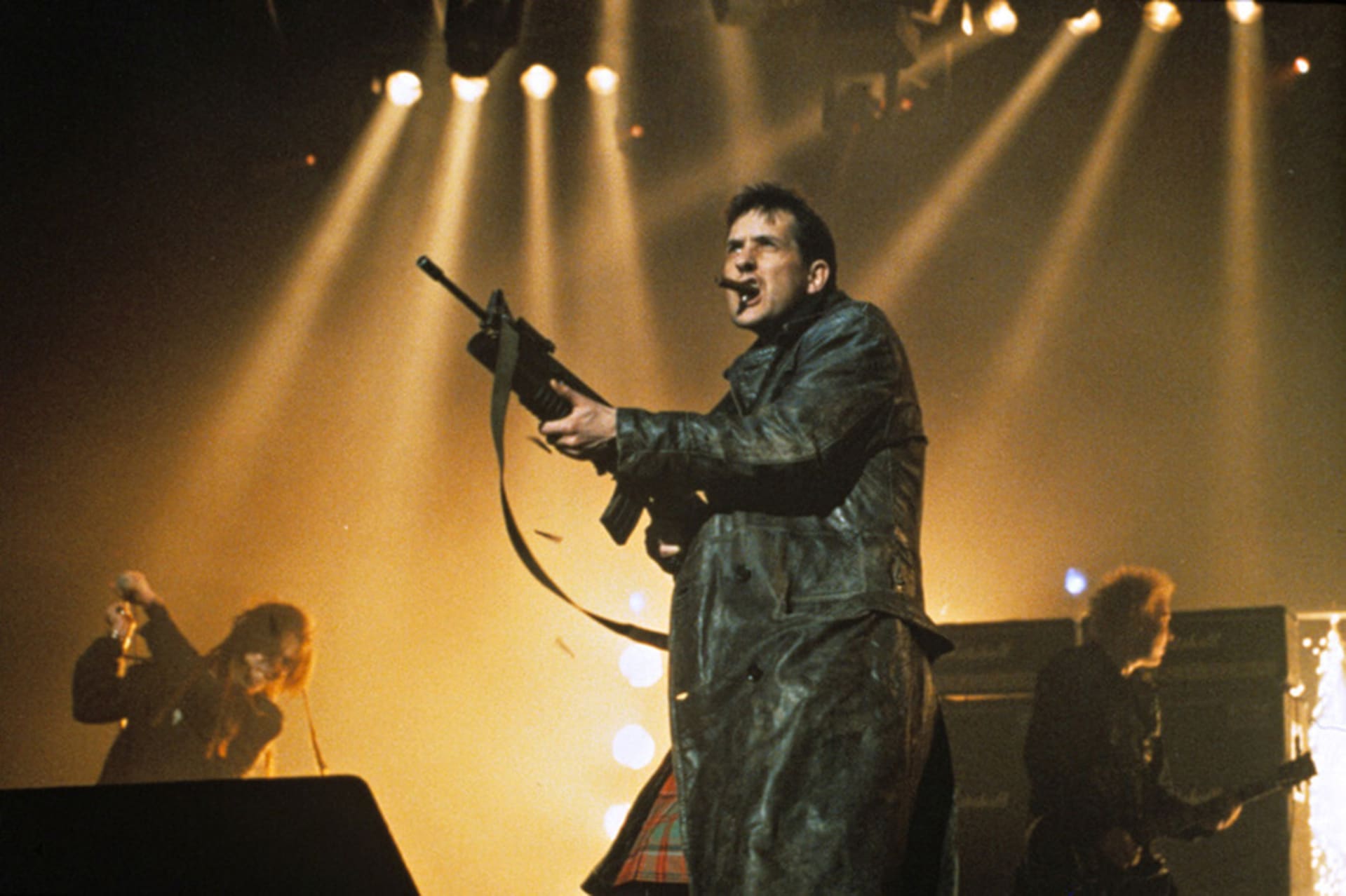
Style Icons: H.P. Baxxter on The KLF
When Bill Drummond and Jimmy Cauty formed the British situationist acid house collective The KLF, they couldn’t have hoped for a more entertaining result than the irony of much of their stadium techno getting lost in translation. Enter Scooter and frontman H.P. Baxxter, whose propensity to shout surrealist musings over hard trance has galvanized legions of fans from Germany to Belarus to pierce their eyebrows and rock peroxide flattops. And to buy thirty million albums. Here, Baxxter describes how The KLF taught him that you don’t have to get the joke to laugh all the way to the bank. Above, Drummond takes a cue from André Breton during the BRIT Awards in 1992 and fires blanks from his M-16 randomly into the stunned crowd. For the performance, The KLF teamed up with crust punks Extreme Noise Terror to play “3 a.m. Eternal”.
On December 5th, Electronic Beats and Telekom will present an extremely limited capacity Scooter concert in Hamburg to celebrate their twentieth anniversary. For full details, plus the opportunity to win tickets, head here. Photo: Richard Young
Hearing The KLF for the first time was a decisive turning point in my life—I remember it like it was yesterday. A local radio show in Hanover played “What Time is Love?” on a Saturday in the summer of 1990, and my fate was changed forever. It was the track’s second release, the “Live at Trancentral” version with a rap by Isaac Bello and also included crowd cheering, a siren sound, a high pitched chorus and this amazingly hypnotic synth sequence that we later secretly used on dozens of Scooter tracks. It immediately reminded me of Anne Clarke’s “Sleeper in Metropolis”. The emergence of “What Time Is Love?” in the German charts came totally unexpectedly for all of us. It was like a cannon ball blast, an explosion—certainly something I had never heard before. “Kick out the jams, motherfucker!” Heavy metal and techno and maximum pressure and EUPHORIA united in a single track. The KLF’s Bill Drummond and Jimmy Cauty were simply far ahead of their time. That following Monday I immediately went to the record store and bought the single and, throughout the years, every subsequent one as well.
I remember on Friday nights we would always meet up at my place in Hanover about an hour before we went out partying. Immediately we’d open our beers and turn up The KLF to earsplitting levels. The neighbors then knew: the crazy dude—that would be myself—is going to lean out the window and scream his soul out of his body for the next hour. After that, he’ll be okay. But I really thought I could fly. That was before we had any raves in our area, so we just went out to our local discotheque waiting to hear The KLF. But naturally, it was quite difficult to convince the DJs to play them because it didn’t really fit in with everything else in the German charts, which I admit were absolutely horrifying. But those were the times—DJ culture for us was just beginning, the first techno club in Hanover opened in 1991, and then came the first raves.
What always fascinated me was how The KLF created their own, megalomaniacal world with a healthy dose of irony. It was all very ambiguous, anarchic, smart, and funny. They released studio recordings that sound like they’ve been recorded in a stadium, which they also marketed as such. I mean, “Trancentral” was their studio! Scooter’s very own “Hyper Hyper” also later on included massive crowd cheering, and to this day our liner notes always include surreal claims like, “Made at Sheffield Underground Studios 1, 2, 3, 4, 5, 6, 7, 8…”, as if everything was recorded in eight different studios with superhuman amounts of gear and effort. In the past, I even wrote in “London”!
Indeed, The KLF were always something of a mystery, almost like a secret cult. Just look at the mysterious logo with a ghetto blaster in the pyramid and the all-seeing eye, which immediately reminded me of Freemasonry and secret societies. Or Cauty’s wrecked, 1968 Ford Galaxy police car that appeared in videos and on their album covers, and which they claim was used in the film Superman IV. The KLF declared that the car had spoken to them, revealing its name as “Ford Timelord”, which is also credited in the album sleeves. To me, such surreal approaches to presenting their image were key in bridging the gap between underground and commercial success. Paradoxically, The KLF always looked upon themselves as a vehicle of short-term artistic expression rather than a long-term recipe for success.
It wasn’t until years later that I actually read The Manual: How to Have a Number One the Easy Way by Drummond and Cauty. I was proud to realize that Scooter had followed most of the rules in the book without even knowing of its existence. I was especially amused by the parts about the singer having to be the greatest asshole imaginable—but that’s another story. Around 2000 we read an interview where Bill Drummond was asked who he sees as their successors. When I read the name “Scooter”, I couldn’t believe it. There had always been the suspicion amongst musicians and fans that The KLF were the true masterminds behind Scooter. When “Ramp! (The Logical Song)” made it into the UK and Australian charts, our English label was approached by a number of people demanding that they admit Drummond and Cauty were us. I couldn’t imagine more flattering praise. ~
This text first appeared first in Electronic Beats Magazine N° 35 (3, 2013). Read the full issue on issuu.com or in the embed below.
Published October 21, 2013. Words by H.P. Baxxter.
